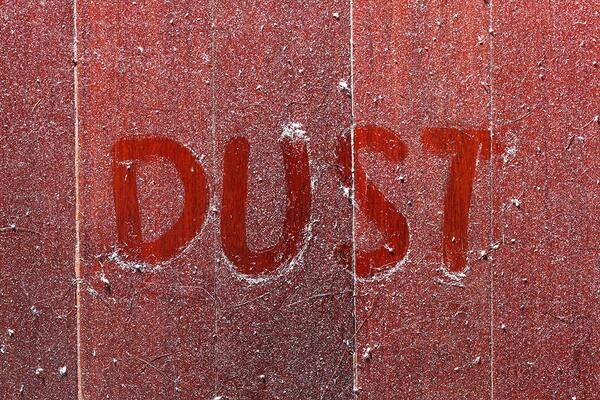
Effective filter media area is an important characteristic of an air filter. How is effective filter area determined and calculated? And does higher effective area really increase a filter’s separation efficiency?
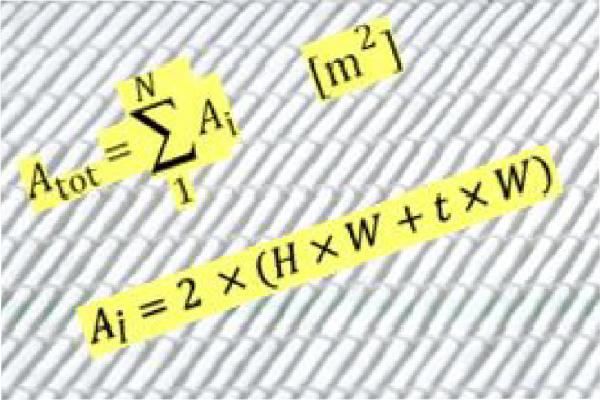
Do you know how effective media area is defined and which impact it has on filter efficiency?
In its definitions of air filtration terminology, ISO 29464 clearly distinguishes between the overall medium area and the effective medium area of an air filter. The overall filter area is the total area of filter medium contained in an air filter. The effective filter area, on the other hand, is defined as the medium area through which air passes, i.e. the area actually available for particulate filtration. Areas covered by adhesives, struts etc. do not count as effective filter area [1].
ISO 29461-1:2021 Annex A uses a similar definition. This standard for air intake filter testing for rotary machinery defines the effective filter area as the filter medium area available for particle separation [2].
[1] See ISO 29464 (2011), p. 2.
[2] See ISO 29461 (2021) Annex A, p. 3.
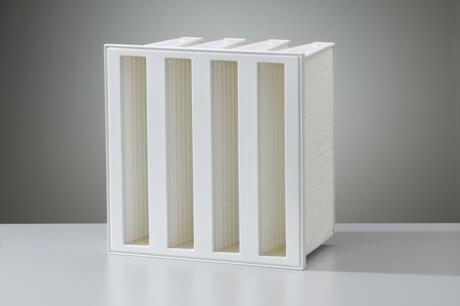
For example: the EMW® MPK 4X-20 GT compact filter. It contains an overall filter area of 20m². The body of the air filter consists of four V-shaped modules. Two packets of minipleat pleat packs are integrated in each of these modules. The surrounding plastic frame and the filter media are joined together in each module by a sealing compound to ensure a strong, leakage-free connection even under high air throughputs. The areas of filter medium which are covered by the sealing compound are subtracted off as specified in the standard.
Calculated in this way, the effective filter surface of the MPK 4X-20 GT according to ISO 29461 is approx. 18.3m².
EMW® calculates according to slightly stricter in-house standards. In addition we subtract the area covered by the hot-melt adhesive strip which reinforces and strengthens the pleat structure of the media. Calculated by our method, the effective filter surface of the MPK 4X-20 GT is approx. 17.6m².
Effective filter area is commonly considered as a key property for selecting the right air filter. The general thinking here is: "The larger the effective filter area, the better the filter efficiency".
This rule of thumb must however be looked at more closely when attempting to predict filtration performance and service life in a specific application.
The reason for this: Certain particle size ranges cause filtration mechanisms which lead to different effects, depending on the medium’s effective filter area and the resultant air flow rate moving through it.
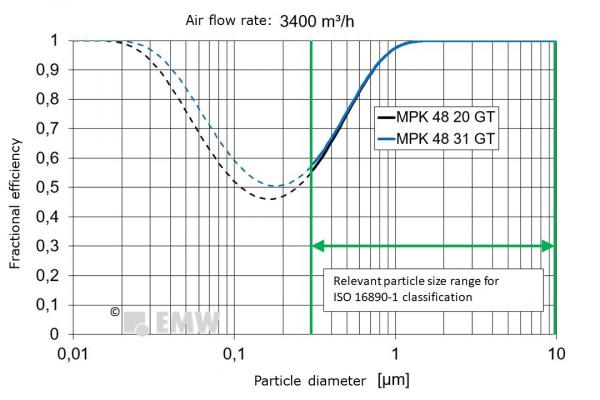
As can be seen in the diagram below, fractional efficiency is essentially unchanged for filters with different effective areas over the particle size spectrum above 0.3 μm.
The two filters compared are the MPK 48-20 GT (effective filter area 17.6 m²) and the MPK 48-31 GT (effective filter area 25.3 m²). Both are ISO ePM filters as classified by ISO 16 890 (formerly classified as: F8 according to EN 779).
As can be seen from the plot, the increased effective filter area has only minimal effect - on filtration performance at least - over the particle size spectrum considered (>0,3 μm).
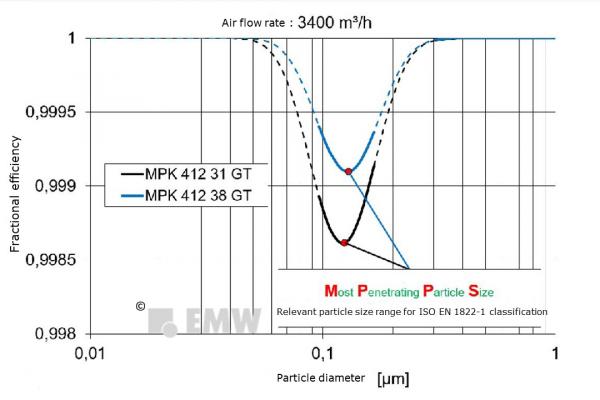
On the other hand, if the filtration is intended to remove smaller particle sizes, i.e. in the diameter range <0.3 µm, decreased filter area does cause a decrease in filter efficiency.
The diagram below compares filtration efficiency data for two compact filter types, MPK 412-31 GT (effective filter area 25.3 m²) and MPK 412-38 GT (effective filter area 30.5 m²), both classified as E12 filters in accordance with EN 1822-1. The higher-area filter MPK 412-38 GT achieves higher separation efficiency.
Additional benefits provided by the MPK 412-38 GT’s larger filter area are reduced initial pressure drop and increased dust holding capacity.
Another point to be taken into account: In the case of minipleat air filters such as the two compared here, pleats can be clogged or blocked by dust particles over the course of their service life. The possibility of this happening becomes greater as the number of pleats increases. These obstructions can close media pores, therefore decreasing the available effective filter area which can reduce the service life of the filter.
What is the net filter area according to ISO 29461?
The first step in determining the best filter for a specific application is thorough analysis of the site ambient conditions and the planned process conditions.
Another point to keep in mind: the higher the filter class of the air filter considered, the greater will be the effect of effective filter area on its overall pressure drop.
The effect of effective particle size on filter efficiency depends on the particle size spectrum intended for removal. At particle sizes less than roughly 0.3 µm, filter efficiency increases with increased effective filter area. Above 0.3 µm, filter efficiency is virtually unaffected by an increase in effective filter area.
The general rules given above must on occasion be adapted to the technical and economic requirements of the application at hand.
When comparing effective areas of different filter types, be sure to ask the manufacturer to give the overall and effective filter area of each type.
Also be certain to have the manufacturer specify the exact procedure used to calculate the effective area for each type.